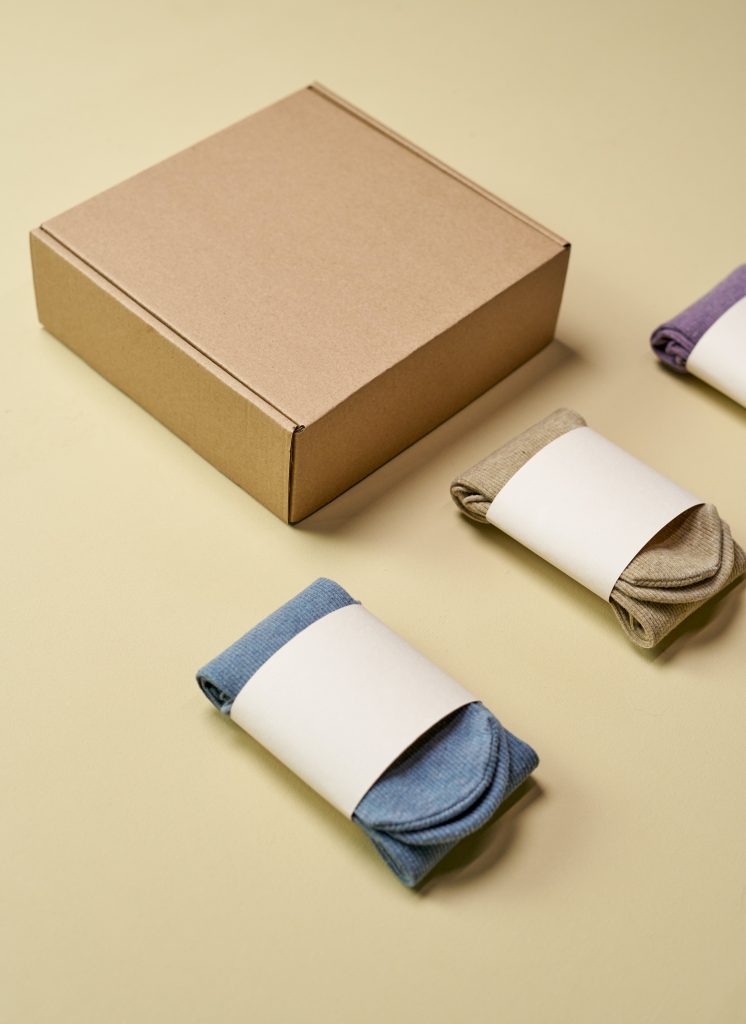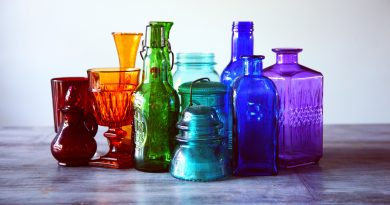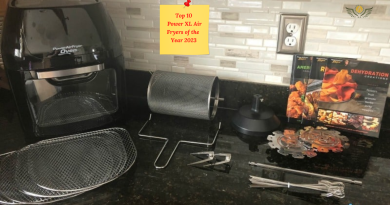Ultimate guide to product packaging design
packaging maintains the world organized. Whether it’s a packet for your M&Ms, an abate for your soiled laundry or the bottle that holds the scrumptious liquid particles of your beer together, the matters we put matters in are important!
So what is product packaging? Product packaging graph refers to the introduction of the exterior of a product. That consists of options in cloth and shape as properly as graphics, colorations and fonts that are used on wrapping, a box, a can, a bottle or any variety of container.
It’s a realistic tool, yes. (I mean, how else are you going to correctly get beer into your mouth?) But it’s additionally extra. Like any suitable design, packaging tells a story. All of these important points assist us to recognize what the enclosed product is for, how it has to be used, who has to use it and, perhaps most importantly, if we ought to purchase a product or not.
In the Ultimate Guide to Product Packaging Design we seem to be at how to get your packaging to inform the story you want.
Before you start your packaging design

3 essential questions
There are three questions you ought to have the reply to earlier than you begin designing the packaging for a product:
- What is the product?
- Who’s shopping for the product?
- How are human beings shopping for the product?
-
What is the product?
Not a trick question; this has to be a handy one. What are you selling? How huge is it? What substances is it made of? Is it delicate?
This query is going to assist you decide if there are any logistical musts for your product packaging. For example, a refined product will require extra impervious packaging. Something that is massive or with bizarre dimensions, on the other hand, may additionally require a customized packaging answer alternatively of an out-of-the-box box.
-
Who’s shopping for the product?
The product supposed to be used through men, women or both? Is it for adolescents or adults? this geared closer to humans who are environmentally conscious? To these on a price range or with loads of disposable income?
A product’s packaging needs to enchant its perfect consumer; it’s necessary to understand who that purchaser is earlier than you begin the plan process. Products for older adults may additionally want large text. Alternatively, objects geared closer to a prosperous patron will want to think about substances that create a feeling of luxury.
-
How are human beings shopping for the product?
Are they buying it in a supermarket? A small boutique? Online?

You’re going to choose to suppose about packaging otherwise if the product is going to be offered on-line and shipped than if it’s going to want to stand out from the opposition on a big-box shop shelf. Items that will be bought on-line possibly shouldn’t have a lot of more area that ought to motivate the product to rattle around, or the bundle to bend. And those that will be on a boutique shelf will want to capture the eye of a consumer surrounded with the aid of cutesy objects in cutesy packages.
Got your answers? Good. These will inform you in making all of the different (many) choices that you’ll have to make in the packaging format process.
Still puzzled over these questions? You’re in all likelihood no longer geared up to begin the packaging sketch manner simply yet. That’s okay! It’s better to take your time and get it proper than bounce in too soon.
Information you need to collect

Sometimes a product is stand alone, and in different instances it’s representing an hooked up brand. If your packaging desires to symbolize a positive manufacturer aesthetic, make positive you’ve gathered the following records earlier than you start:
Colors
If you already have the CMYK values for Pantone Matching Values (PMS) shades encompass these as they’re particularly for printing. (If not, a hex code is fine, too.)
Fonts
Make positive you have the suitable fonts and any unique utilization directions (like kerning or weight).
Logo
If you want to put a brand on the package, make certain you have a vector file available.
99 designs font guidelines
Content that wants to go on the packaging

What this is is going to be notably special to your precise product, however you’ll prefer to make certain you have it all sorted out earlier than you begin design. Note that relying on your industry, there may additionally be some matters you’re required to put on your packaging for felony reasons.
Written copy
This can encompass something from the title of your product to a description to phrases engaging anyone to purchase.
Imagery
Want to put photographs on your packaging? You’ll want to have these equipped to go earlier than you begin the plan process.
Required marks
Depending on your product / industry, you may also be required to encompass a barcode, diet information, affiliation marks, etc.
Know what transient content material you need
Some products—like ingredients or cosmetics—have extra facts that wish to be put on distinctive batches of merchandise (expiration dates or batch numbers). You likely don’t prefer to print this without delay onto your packaging as it will be altering regularly, however you’ll desire to make your shop area positive for a decal or stamp to be positioned at a later date with that information.
product packaging reproduction and images
Style likes and dislikes
It’s an excellent notion to have achieved some fashion lookup earlier than you begin the format process. Start accumulating packaging that you like. Snap pics when you’re at the store. Create a Pinterest board.

Remember, fashion ideas aren’t continually a one-to-one transaction. Maybe you love the color of a particular shirt, or the print of your aunt’s curtains, or the font on a sandwich save sign. One aspect to remember, though, is that you’re now not always curating layout thoughts for yourself, however for that best customer. You can also love shabby, antique chic, however if you’re promoting child motorbike jackets to badass biker moms, that’s likely now not the first-rate fashion for your packaging.
Another factor to begin questioning about when you’re beginning your fashion experience is materials. You don’t have to make any selections properly now, however you’ll prefer to begin noticing the exceptional options.
Budget
Packaging diagram budgets wreck down into two categories:
- One-time costs
- Per-item costs
One-time expenses consist of matters like paying for the unique graph work, buying a stamp (if you’re going the DIY route), print plate setup (for large, offset print runs.) You pay for these up front, and commonly solely as soon as (unless you exchange your design).
Per-item expenses are usually for substances and labor. Each field will value a positive amount, as will the tissue paper you stuff it with and the tape you use to seal it. And you both have to pay any one to put your product into the box, or do it yourself.
You’ll prefer to have a ballpark concept of how an awful lot you’d like to spend earlier than you begin the diagram process. Keep in mind that less expensive isn’t constantly better; paying a little bit greater for your substances should up your presentation (and your promoting price) with the aid of making you stand out from the competition.
The packaging graph procedure in 7 steps
Once you’ve gathered all of this information, it’s the end time for the enjoyable part: the diagram process! Remember how you prefer your packaging diagram to inform a story? The options you make in the sketch system are what’s going to assist you inform that story.
- Understand packaging layers
There are three “layers” of product packaging: outer packaging, internal packaging and product packaging. Your product might also want one or all three of these.
Ottoman gourmand bag design

Outer packaging — is the first component a consumer is going to see. It’s what protects your product from the elements. This ought to encompass the container that the product is shipped in or the buying bag the object is positioned in at the store.
Inner packaging — Inner packaging is what continues your product nestled safely in the outer packaging. This would possibly be packing peanuts or tissue paper that stops something from getting jostled or scuffed. Or it may be a sealed bag that acts to keep freshness.
Product packaging — Product packaging is what most human beings suppose of when they assume packaging: it’s the field the toy comes in, the bottle with a label, the tag on a garment, the wrapper of a sweet bar.
Each one of these layers of packaging offers you a risk to inform a section of your story.
Choose the proper kind of packaging

There are many distinct sorts of packaging accessible for your product:
Think lower back to these three questions, especially who’s shopping for your product and the place where they are discovering it. You’re going to use that to create the facts structure for your package.
You may also have stunning pictures of your product in action, a super testimonial from a customer, a witty tagline that explains how you’re awesome, and a brilliant picture displaying clients how to use your product. But when a client appears at your packaging they’re likely solely going to bear in mind one thing. What do you favor that to be?
Pick the one absolute most vital aspect you choose clients to be aware of about your product. That has to be the centerpiece of your design.
Evaluate a packaging design
You’ve received some brilliant sketch ideas! Now it’s time to provide some feedback. Here are a few things you’re going to favor to assume about:
Is it clear what your product is?
When you see the package, is it clear what the product does and who it’s for? Buyers are solely going to spend cash on matters they understand.
Make positive your packaging doesn’t seem like something else (unless it’s very intentional). You in reality don’t desire to confuse your consumer.
Is the packaging an trustworthy illustration of your product
One of the worst matters you can do is misrepresent your product in your packaging. Make positive any pix on the packaging are genuinely snap shots of the product. Of course you can and must put your exceptional face forward, however if you exhibit a photo of cakes crammed with raisins and there’s certainly solely 1 raisin in every one of your muffins, a client is going to sense cheated (and in all likelihood won’t purchase from you again).
What will this bundle appear like in 3D?
A desirable fashion designer ought to supply a mockup of your layout each print-ready (flat) and in 3-dimensions. You can also create your personal mock-ups with the aid of printing something out on white paper and establishing it into a field or tube. This will assist you word matters you wouldn’t otherwise. Sometimes a photo will seem magnificent when flat, however horrible when developed (or vice versa). Make positive you apprehend the difference.
What will this package deal appear like in stores?
Shelf-impact is very vital for merchandise that are offered in-stores. You’ll desire to consider:
How much of the packaging will be visible? When merchandise is lined up subsequent to each other, you can typically solely see one-face. Make positive your most-important data is the front and center.
Is this layout versatile?
You may also solely have one taste of Aunt Miranda’s Famous Hot Sauce at the moment, however in the future you may desire to create Aunt Kelsey’s Infamous Buffalo Sauce and Aunt Sasha’s Secret Caesar Dip.
Is your packaging reusable?
This might also now not be essential for each and every product, however you can also reflect on consideration on if your packaging can be reused (and if you favor it to be)! For example, can your bag be repurposed into a grocery tote? Free marketing! If you promote gardening gloves, can your field be reconfigured into a planter? That’s wise and functional!
Get the proper documents from your designer
You’ve determined your packaging design. High five!
Now go back to that statistics you received from your printer and test to make sure you have the proper files. You in all likelihood need:
Packaging dyelines in vector format. This will likely be an Adobe Illustrator (.ai), .pdf, or .eps file. You will want one for every version of your packaging you are creating. (So, if you have three flavors, you want three dyelines.)
Color codes. If your printer does customized colors, make certain you have the Pantone or CMYK color codes so that the whole lot turns out searching like you want.
Packaging format glossary
Barcodes — (UPC and EAN) — Barcodes are these corporations of strains on any package. They have machine-readable facts on them that show statistics about the product, which includes price. There are quite a few extraordinary kinds of barcodes, along with UPC (Universal Product Code)—the predominant barcode in North America—and the EAN (International Article Number (it was once initially “European,” consequently the E)—an international barcode. You can also desire to follow for these earlier than you get your packaging designed.
Bleed — In printing, you use a bleed when your layout goes to the side of your paper (or box, or wrapper). In this case, designers will simply add a little greater layout to the edges (the “bleed”) so that when the plan is printed and reduced to the proper measurement there’s some room for error if the cuts are a few millimeters off.
Canister — A spherical or cylindrical container, normally made of metal, and used for storing matters like meals and chemicals.
CMYK — Stands for cyan (blue), magenta (red), yellow and key (black). These are the 4 colorings used in printing. Each color has a CMYK code that a printer will use to assist shade health between your plan and the completed package.
Dielines —The flattened pattern of your product packaging. Designers and printers use them to create the suited diagram for a package.
EPS — Stands for encapsulated postscript. This is a file extension for vector-based images. They can typically solely be opened in specialized photo format programs.
Digital printing
Digitals printing — A current printing approach whereby records about the file is dispatched to a printer digitally and every piece of packaging is run in my opinion thru that printer. printing is tremendous for small-runs and brief flip round times. Oftentimes, the extra normal offset printing is greater and lower priced for large print runs.
Offset printing — A printing approach whereby plates of your layout are created in 4 colors (CMYK). These plates are then run via a large, industrial printer. Offset printing has excessive setup fees (i.e. the plates want to be created), however in giant volumes (usually over 1,000 or so pieces) it is extra economical.
Pantone — Pantone is an organization that created the Pantone Matching System (PMS). The PMS is a catalog of standardized printing colors. Each coloration has an assigned quantity and can be reproduced almost identically by way of any printer.
PDF — Stands for transportable record format. It’s a versatile file structure that can be both a vector or raster (you desire vector for packaging!) and helps with each pics and text. PDFs can be opened on almost any computer.
Raster file kind — Raster pictures are made up of lots of tiny dots (pixels). As such, they are tough to resize.
RGB — Stands for red, inexperienced and blue, the three major colors (that can be mixed to create all different
99 designs recommends
Ready to get commenced on your product packaging? Here are some splendid corporations we have worked with and notably recommend.
For getting your packaging designed:
99designs. (I mean, we’re allowed a little bit of a self callout here, right?)
For boxes, mailers and cartons:
Refine Packaging
For tags, wrappers and boxes:
Printing for less
For labels or stickers:



